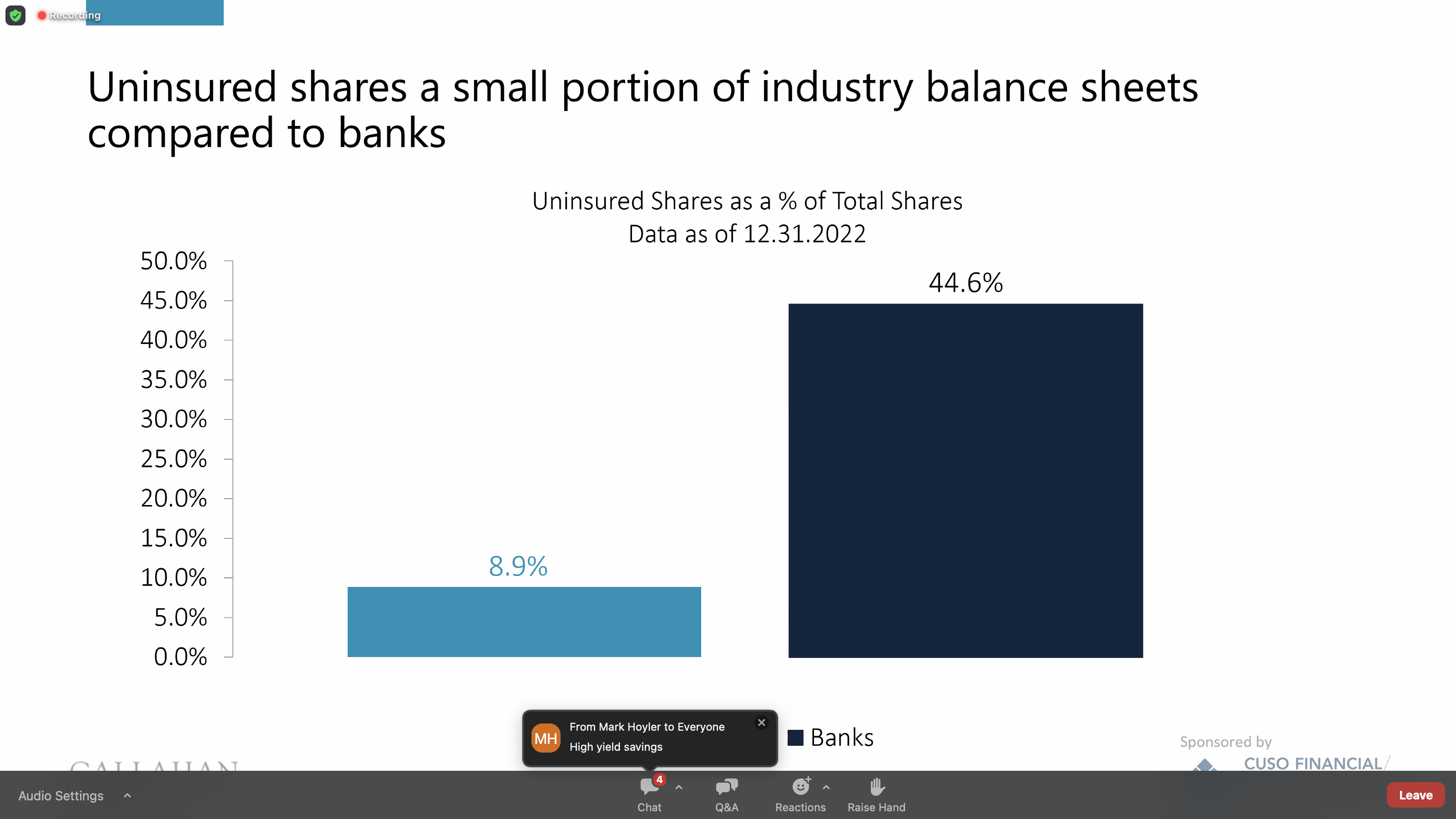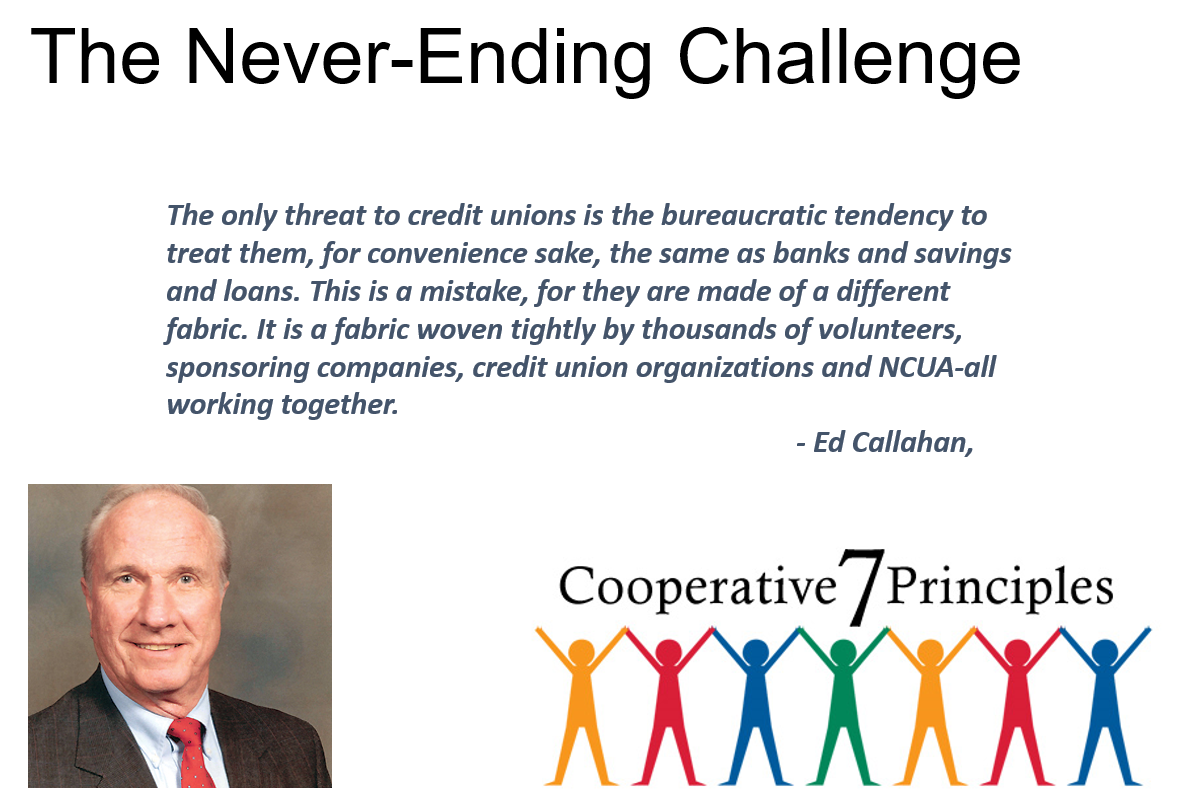Within 90 days of Safe Harbor, Colorado Partner Credit Union’s CUSO subsidiary becoming a public company, the December 2022 financial result showed a negative retained earnings of $39.7 million.
The company’s stock has fallen from a peak of over $10 per share in October 2022 to close at $.39 yesterday. Auditors have raised a going concern footnote as a result of its December 2020 financial position.
Partner Colorado Credit Union the CUSO’s founder and owner, has restructured its initial sale terms of $185 million in cash and stock. This resulted in PCCU recording a $44 million dollar loss in the March quarter, to offset the gains from the sale recognized in the 4th quarter of 2022.
Except for ongoing revenue from its operating service agreements with SHFS, the credit union has yet to receive any payments from this sale closed in September 2022.
How could such an initial optimistic announcement turn south so quickly?
No one knows how this start up effort to transform a private, relatively small Fintech front-end platform for introducing cannabis related businesses (CRB’s) to financial partners will turn out.
However, CPCU’s effort to tap into the public market’s fervor for “Fin Tech-Cannabis” related startups has multiple lessons for credit unions. One can see possible parallels in the continued interest and fund raising today in credit union for FinTech labeled businesses.
Is the Startup Scalable?
One topic is scalability. Safe Harbor was started in 2015 with the full support of all of CPCU’s operational capabilities, especially branches.
The credit union offices were able to open accounts, receive cash deposits, make loans and provide transaction services. Is this geographically based start up model scalable outside the jointly operated locally-incubated context?
Is the compliance process and technology support so unique, that other local financial institutions and FinTechs would be unable to develop their own capabilities?
“At the end of last year, there were 168 credit unions, 479 banks and 126 non-depository institutions that were serving marijuana-related businesses, according to FinCEN.” (CU Times)
No Free Market
One observation at this stage is that there is no “free” market. The credit union is learning that a private firm using the SPAC process has to “pay to play” to become publicly traded.
Reviewing some disclosures form the May 2023, 10-Q SEC filing suggest why this is the situation.
The first is to note that this sale was structured as Safe Harbor buying out the NLIT SPAC, not the reverse as suggested in the $185 million announcement.
Secondly it is impossible to tell which investors got paid what in this transaction. Certainly the brokers, accountants, lawyers and other facilitators were paid fees. But which SPAC shareholders were paid what return?
What is known is that the seller, CPCU, has not received anything from the sale. Moreover It has converted a significant amount of the debt portion to stock and extended the much reduced debt payments further out.
The new entity’s first major transaction was to acquire in November 2022 another cannabis business for $30 million in stock and cash. The tangible assets in this acquisition were minimal. The contribution to immediate earnings, unstated. It would seem to be a transaction negotiated before the full financial impact of the CPCU sale was known.
SHFS continues to compare in its filings the current financials with its pre-public quarterly results. This previous financial performance, under the credit union’s auspices, reveals a very modest business, albeit, with a positive financial bottom line.
The Impact on CPCU
The credit union appears well capitalized. The cannabis business relationships from SHFS are important. About $35-40% of its deposit base appears to be from CRB’s-much probably held in share draft accounts.
Prior to the public sale, CPCU recorded its CUSO investment at $8.0 million. To date the credit union has not received any of payments, including the $3,143,388 in cash and equivalents held by Safe Harbor prior to the sale.
As stated throughout the SEC filings, CPCU is the SHFS’s primary banking partner.. “Currently the Company substantially relies on PCCU to hold customer deposits and fund its originated loans. As of this time, substantially all of the Company’s revenue is generated by deposits and loans hosted by its PCCU pursuant to various services agreements.”
Concentration limits for the deployment of loans are further categorized as i) real estate secured, ii) construction, iii) unsecured and iv) mixed collateral with each category limited to a percentage of PCCU’s net worth. In addition, loans to any one borrower or group of associated borrowers are limited by applicable National Credit Union Association regulations to the greater of $100,000 or 15% of PCCU’s net worth. Page 27
Further disclosures show that the credit union has limits on the amounts of total CRB related loans it will hold as part of its service agreements: PCCU’s Board of Directors has approved aggregate lending limits at the lessor of 1.3125 times PCCU’s net worth or 60% of total CRB deposits.
CRB deposit limits: (page 27) Under the Support Services Agreement PCCU will continue to allow its ratio of CRB-related deposits to total assets up to 65% unless otherwise dictated by regulatory, regulator or policy requirements. Actual CRB deposits at March 31, 2023 $214 million and $161 at December 31, 2022.
CPCU’s CEO and CFO are members of SHFS board; the credit union owns 55% of the voting stock from the restructuring. The credit union’s current operations certainly benefit from SHFS’s clients apart from what may be received from the sale of the CUSO.
The Transparency Opportunity
SHFS’s SEC filings provide many details of its business history and financial twists and turns. The latest 10-Q filed May 15, 2023 can be found here; and the definitive proxy statement Schedule 14 A, filed April 23, 2023 for the firm’s annual meeting is here.
Two financial questions are partially answered in these documents. If the SPAC held $100 million in cash, how did the working capital become so depleted by yearend? How did the SHFS end up with over $39.7 million in negative retained earnings at December 2022 requiring the complete restructuring of the transaction with CPCU?
Below are some excerpts from these documents. The story is complex. There is not a single narrative point of view as the filings show different elements of the financials in various footnotes.
I have selected some to illustrate the information available. There is both quantitative and qualitative (business risk factors) information provided.
One positive note that may bode well for the future is that Safe Harbor’s web site and links are one of the most comprehensive examples of transparency I have reviewed. The stock valuation information is detailed both currently and historically. All of the required SEC and financial reports can be accessed on line at SHFS website.
On its investor relations page the firm makes this commitment: Safe Harbor Financial (Nasdaq: SHFS) seeks to enhance shareholder value not only through exceptional business performance and practices, but also through responsible and effective communication with its shareholders. The latest company information relevant to the individual and institutional investor includes stock price and history, upcoming events and presentations and financial documents. Safe Harbor Financial trades on the Nasdaq under the ticker symbol SHFS.
That is an example credit unions should totally embrace as well.
Selected Excerpts from SEC 10-Q filings
(emphasis added)
From Note 3, the Business Combination detailed in Note 1 above was accounted for as a reverse recapitalization, with no goodwill or other intangible assets recorded, in accordance with GAAP. Under this method of accounting, NLIT (the SPAC) was treated as the acquired company for financial reporting purposes. Accordingly, for accounting purposes, the Business Combination was treated as the equivalent of SHF issuing shares for the net assets of NLIT, accompanied by a recapitalization.
For tax purposes, the transaction is treated as a taxable asset acquisition, resulting in an estimated tax basis Goodwill balance of $44,102,572, creating a deferred tax asset reported as Additional Paid-in Capital in the equity section of the balance sheet as of the date of the business combination.
In November, 2022 SHFS acquired Abaca together with its proprietary financial technology platform in exchange for $30,000,000, paid in a combination of cash and shares of the Company.
The November press release stated: the acquisition increases Safe Harbor’s customer base to include more than 11,000 unique depository accounts across 40 states and U.S. territories; adds Abaca’s fintech platform to Safe Harbor’s existing technology; increases Safe Harbor’s financial institution client relationships and access to balance sheet capacity to five unique financial institutions strategically located across the United States ; increases Safe Harbor’s projected monthly revenue by approximately 40%; increases Safe Harbor’s lending capacity; and nearly doubles Safe Harbor’s team, adding to the existing talent pool of the cannabis industry’s foremost financial services and financial technology experts. (note 4 10-Q provides the fair value presentation for the transaction page 20)
Page 20 in the 10-Q shows what NLIT’s fair value assets it offered to support the $185 million CPCU purchase valuation. The key point is that $80 million was held in shares subject to possible redemption and the remaining cash of $19 million was held in trust.
It is not clear how many common A shares were redeemed, or how the money in trust was used. The result is that at December 2022 SHFS had only $8 million in cash and negative working capital (current assets less current liabilities) of $39 million.
The details of the restructure of the $185 million for CPCU was reported on March 23, 2023. Page 26 shows that exchange of debt for common stock resulted in $38.4 million for issuance of common shares. These are subject to a Lockup agreement restricting their sale.
Also CPCU acquired a first lien on all of the company’s assets as a result of the restructure. SHFS issued a five-year Senior Secured Promissory Note (the “Note”) in the principal amount of $14,500,000 bearing interest at the rate of 4.25% and a Security Agreement pursuant to which the Company will grant, as collateral for the Note, a first priority security interest in substantially all of the assets of the Company.
Contributing to the loss in 2022 from note 17 Forward Purchase Agreement page 35:
The trading value of the common stock combined with preferred shareholders electing to convert their preferred shares to common stock triggered a lower reset price embedded in the forward purchase agreement, or FPA. As of December 31, 2022, the Company had already called a special meeting to lower the make-whole price under the preferred share purchase agreement to $1.25/share. . . These events significantly reduced the FPA receivable to approximately $4.6 million, from approximately $37.9 million reported at the end of the September 2022 quarter. The loss in value resulted not only in a compression of the balance sheet, but also $42.3 million charge to other expense on the statement of operations in the fourth quarter of 2022.
At March 30, 2023, SHFS’s balance sheet shows negative retained earnings of $47 million offset by $91 million of additional paid in capital from the restructure of the $180 million initial terms and other stock transactions.
81% of SHFS’s March 2023, $89 million assets are $19 million in goodwill, $10.2 intangible and a deferred tax asset of $42.6 million.





